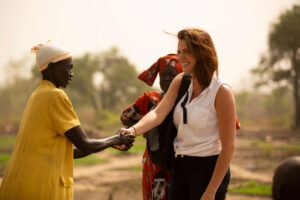
Obakki – A Purpose-Led Lifestyle Brand and Foundation
Founder Treana Peake, supports artisan partnerships and funds development work through the Obakki Foundation.
Global
Grace Robinson December 10, 2020
Daniel Katz, former CEO and President of Rainforest Alliance, co-founded the organization aimed at protecting rainforest communities at the young age of 24 by amplifying the voices of vulnerable farmers and forest communities. The organization strives to create economically and socially sustainable alternatives to tropical deforestation. Founded in New York City, Rainforest Alliance originally focused solely on efforts in the United States, but has since expanded to unite more than 70 countries in the world and over two million farmers to educate and advocate for more sustainable business practices.
Since merging with the Dutch sustainable agriculture organization “UTZ”, Rainforest Alliance has published an enhanced 2020 Certification Program that sets a sustainable agriculture standard for farmers and companies to implement in their practices. The certification was created by the alliance with the additional input of over 1000 people in 50 countries that are representing over 200 organizations. Daniel Katz had previously stepped down from his role as CEO and President, and now runs the environmental program at The Overbrook Foundation, a foundation supporting various non-profits in their quest for environmental justice. He is credited for the “Catalogue Choice” initiative, which aims to reduce the flow of unwanted mail. Daniel Katz’s great environmental achievements and strong passion for sustainable change inspire everyday people to be mindful of their choices and responsibilities in protecting our planet.
Mood of Living: Where did you grow up?
Daniel Katz: I’m from the Midwest, primarily growing up in Cincinnati, Ohio. Even though I’ve been in New York for a long time now, I still feel like a Midwesterner at heart.
MoL: Where did you go to school? What did you study?
DK: I studied Chinese linguistics and political science at The Ohio State University. I lived in Taiwan for a bit, as well as Wuhan, China, for a little more than a year. Even though it’s a large city, most people in the United States had never heard of Wuhan before this year—and not in a good way—even though it’s a wonderful city. I received my MBA from the Stern School of Business at New York University. And, more recently, I studied at the Hudson Institute of Coaching to become an executive coach, accredited by the International Coach Federation.
Daniel Katz
MoL: What inspired you to co-found the Rainforest Alliance at such a young age? Who were your co-founders and what motivated you to create this organization together?
DK: I first learned about the loss of biodiversity and rainforest destruction at Ohio State. While I never planned on a career in conservation, I was committed to helping in any way I could as a volunteer. I wanted to bring a voice to those most vulnerable to the forces driving global deforestation. At that time, in the early 1980s, there were few conservation organizations and none working specifically to help conserve rainforests.
Shortly after moving to New York post-college, I attended a small workshop on rainforests. A few of the attendees and I started meeting on a regular basis, and eventually, an organization grew out of those smaller gatherings. I was 24 years old at the time and really had no intention to start a nonprofit. We would stand on street corners selling “Save the Rainforest” T-shirts, organizing talks, and doing whatever we could to bring attention to the fact that around 100 acres of rainforest were being destroyed every minute.
Our crew included a masseuse, a toxicologist, a returned Peace Corp volunteer, and a theater worker. We were young, passionate, and had absolutely no idea what we were doing. I became our first paid staff person as executive director. We had an amazing team of volunteers and it was that group, collectively, that made us the Rainforest Alliance.
Even though we had no money, office, staff, or experience, I knew we needed to dig deeper into the problems behind deforestation—and more importantly, find solutions. About a year later, we hosted “Tropical Forests: Interdependence and Responsibility,” a three-day event focused on bringing more attention to the world’s endangered forests. With more than 50 speakers, 700 attendees, and a shocking amount of global media coverage, it was the largest event of its kind at that time exploring the destruction of rainforests. So many incredible people came forward to volunteer their time and expertise. It was an amazing feeling, and it was also the beginning of the modern-day rainforest conservation movement.
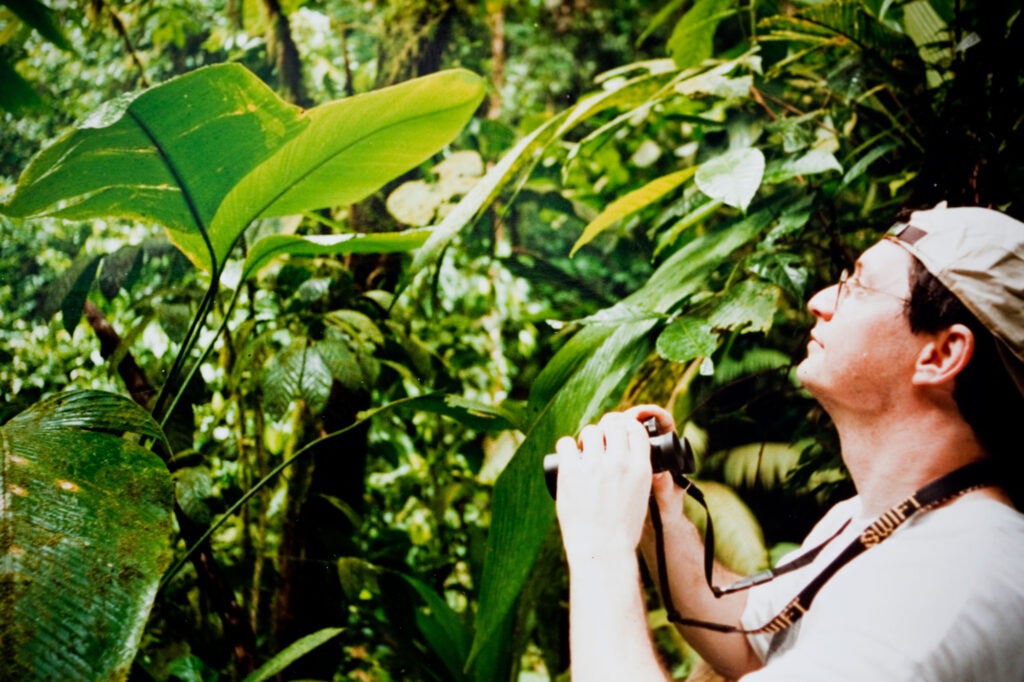
Daniel Katz
MoL: What is the mission of Rainforest Alliance? Did that mission evolve throughout your time as President?
DK: The Rainforest Alliance is creating a more sustainable world by using social and market forces to protect nature and improve the lives of farmers and forest communities. The mission of the Rainforest Alliance has evolved over time, but we have always focused on creating alternatives to tropical deforestation that are economically viable and socially desirable. Ultimately, we envision a world where people and nature can thrive in harmony.
As our mission evolved, so too has our iconic frog logo. Our original logo featured the skyline of New York City intertwined with trees found in the rainforest inside the body of a frog. (Our original name was New York Rainforest Alliance). Over time, we’ve simplified it, removing the buildings and eventually stripping it down further to create a stylized frog. We chose a frog as our identifier because frogs are an indicator species, meaning that their presence—or lack thereof—signals a healthy and thriving local ecosystem. Some 34 years later, our frog remains a symbol of sustainability around the world.
MoL: In what ways has the Rainforest Alliance been successful in protecting forests and improving the lives of the farmers and forest communities around the world?
DK: The Rainforest Alliance works in more than 70 countries around the world with more than two million farmers. We invented independent, third-party certification for the agriculture, forestry, and tourism sectors decades ago, and it continues to evolve and serve as a pivotal tool for farmers, producers, companies, and consumers. Those who earn the right to use our seal meet rigorous environmental, social, and economic standards. These farming and forest communities are going through a long-term sustainability journey, working towards improving working conditions, protecting natural resources, and adopting more climate-smart agriculture practices. In combination with landscape-level programs and advocacy efforts, certification is a powerful tool in our sustainability toolbox. But we are always trying to improve upon this system and even find new, innovative ways to make forward progress in sustainability.
The Rainforest Alliance, and we really do think of ourselves as an Alliance, partners with groups around the world on field-based management programs. For more than 20 years, we have partnered with local communities in Mesoamerica to support best practices in forestry and the sustainable use of nontimber forest products, like the xate palm and the ramón nut. Supporting those who live in and around the forests continues to be an essential focus of the organization. In fact, we are now growing a Forest Allies program, a community of practice initiative focused on protecting, restoring, and enabling responsible management of tropical forests by engaging and empowering smallholder farmers, forest communities, and Indigenous groups. This new program seeks to partner with company investors and forest communities and Indigenous groups to positively affect tropical forests and the people who live and work there.
MoL: How have the number of services and communities involved with the Rainforest Alliance expanded since the organization began?
DK: When the Rainforest Alliance first started in 1987, we only focused on the United States. But we quickly realized that our efforts were really needed all around the world. We have always been a bit different because our programs are all solutions-based. In our early days, we did some unique work. We published the first book on conservation and higher education. We raised hundreds of thousands of dollars for a debt-for-nature swap in Costa Rica. But we are still best known for our work with producers and companies, helping to improve the sustainability of supply chains for agricultural products like coffee and chocolate.
In January 2018, we merged with UTZ, a Dutch sustainable agriculture organization. By combining forces, we knew we could make more impactful and scalable changes. Building on our combined 45 years of certification experience, we recently published our enhanced 2020 Certification Program to continue driving more sustainable agricultural production and responsible supply chains.
For us, it always starts on the ground with the farmers and forest communities. We want to improve sustainable livelihood opportunities for smallholder farmers and forest communities and help to build thriving local economies. We know that, at least in most cases, it is our global consumption demands that are driving deforestation. A rising tide lifts all boats, and farmers lifted out of poverty make the world a better place for all of us.
Photography Courtesy of: Sergio Izquierdo
MoL: At what point did your position transition at the Rainforest Alliance and what led you to your current involvement with The Overbrook Foundation? What is The Overbrook Foundation?
DK: After more than 14 years running the Rainforest Alliance, I decided to step down as executive director and president, and I transitioned into the role of board chair, a position I still hold today. At the time, I had just married and we were ready to start a family. While the Rainforest Alliance still feels like family to me, I was pleased to take on a more back seat role while the organization continued to grow and succeed.
I started consulting for The Overbrook Foundation, a New York-based family foundation, and then became a full-time employee. I run their environment program, which supports about 50 nonprofits per year, ranging from environmental justice and climate groups like the Climate Justice Alliance, Sunrise Movement, and Alliance for Climate Education to environmental reporting groups like Mongabay, Grist, and the Story of Stuff.
MoL: What is the initiative “Catalogue Choice” that you launched at The Overbrook Foundation? What inspired you to develop this service?
DK: Years ago, one of the board members at Overbrook complained that she was receiving too many catalogs in the mail. Sometimes these catalogs were 100 pages or more, and they were going straight from the mailbox into the recycling bin. Such a waste! Nearly 20 billion catalogs were being printed every year. So, Overbrook partnered with a few groups, including the National Wildlife Federation and the Natural Resources Defense Council, to see how we could minimize this waste. I worked with a great entrepreneur to build the program and eventually Catalog Choice became the number one site to opt out of receiving unwanted catalogs and mail. Catalog Choice, now a program of the Story of Stuff, supports more than two million people and saves tens of thousands of trees annually in the process. It’s an easy way to make a palpable difference. Like the Rainforest Alliance, Catalog Choice is a social enterprise that supports conservation by having consumers rethink the way they behave to benefit the environment.
MoL: What are some of your environmentalism achievements that you are proud of?
DK: Over the last three decades, the Rainforest Alliance has grown a lot and continues to drive impactful changes. The team is fantastic, and I believe that our mission is both practical and radical. Unfortunately, I still feel like a failure. The climate crisis rages on, rainforests are still in dire trouble, and we continue to lose countless species to extinction every year. I am still passionate about making a difference but recognize it is not going to happen unless we make dramatic changes—and soon. We have less than a decade to prevent potentially irreversible damage from climate destruction. We have the tools we need to do this. Plus, as global economies have practically shut down because of the Covid-19 pandemic, we have an amazing opportunity to build back better. We need to shift our priorities as a society so that nature comes first. We need to set aside a certain percentage of forests and work harder to ensure that we save species and the landscapes where they live. This may sound trite after all these years, but as the ecologist Aldo Leopold said: “The first rule of intelligent tinkering is to save all the pieces.” I know this may be hard to grasp but until—and unless—we follow the science, our future will continue to be imperiled.
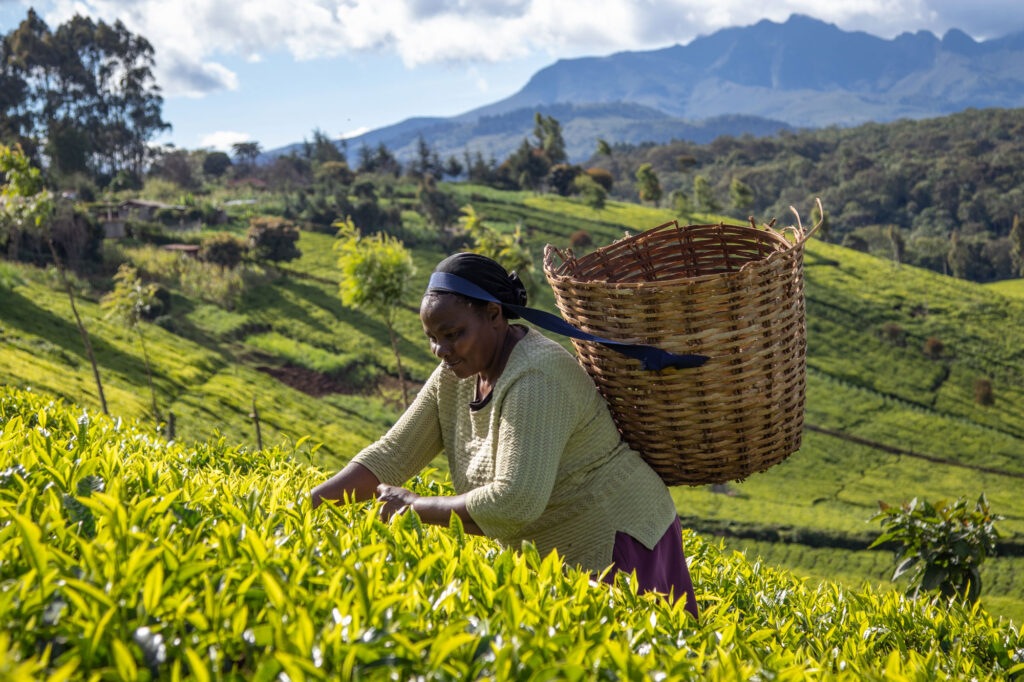
MoL: Have you developed a sustainable life outside of your work? If so, how?
DK: I live in Manhattan, and cities are the most sustainable places to live. Every day for decades, I’ve taken the subway to and from work. Up until recently, we had a great food waste collection program in Manhattan, so we could separate out compostable food scraps, paper, plastics, etc. I definitely look for brands that align with my values, but as a self-proclaimed gadget nerd, I know I buy too much stuff. Because sustainability is a journey, I don’t want to be too hard on myself, but I know I could do better. At The Overbrook Foundation, we talk about how we can promote a “planetarian’s lifestyle,” living lighter on the Earth in a way that uses less and benefits all of us. This may sound hoaky, but science proves that how we as consumers live and eat disproportionally impacts the climate. And on top of that, climate change does not affect everybody equally. It’s usually those in low-income neighborhoods and countries who contribute the least to global warming but are hurt first and worst by both natural and unnatural disasters.
MoL: As a frequent speaker at colleges and universities, what advice do you give to young leaders looking to start NGOs? How can one start an NGO with little to no funding?
DK: As I mentioned earlier, I don’t feel like I’ve been very successful at “fixing” our environmental problems, so I am not sure I’m the best person to be asking for advice. I believe we are all a part of our Earth’s living system, and we have a responsibility to leave the planet better than how we found it. My dad’s generation, “the greatest generation,” was not always aware that their rapid industrial growth would come with major consequences. But had they known that their actions would create a climate crisis, would they have behaved differently? My children’s generation are inheriting a world that needs immediate first aid. I’m not that worried that the planet will survive as it has evolved over millions of years, but we as humans may not be around to see that evolution. And I am distraught about the damage we are doing to species everywhere, from the important pollinators like bats, birds, and bees, to charismatic megafauna like panda bears, snow leopards, and rhinos.
I started the Rainforest Alliance with a singular focus and a boatload of passion. Everyone will have their own special sauce for igniting an organization but the more tools and resources available, the more likely the chances for success. Also, there are already some 22,000 environmental organizations just in the United States. I would suggest that before starting a new group, check for like-minded groups already in existence. At the same time, there are so many problems that need to be fixed. I believe that in an ideal world, nonprofit jobs will be more coveted than for-profit positions. As a society, we need to show greater respect to those who work for the greater good. Salary size should not be an indicator of one’s value in society.
MoL: What changes do you hope to see on our Earth in the next 20 years?
DK: I hope that we, collectively, recognize that by tweaking our values and mindset, we can both build and support a population that creates less harm. We need to stop waste and embrace a circular economy. For example, while plastic was an amazingly valuable invention, its harm to our planet far outweighs its single-use convenience. From the top of the corporate ladder to the individual consumer, we all need to pivot to products that are not trashing the planet. There are so many innovations to come. From how we build roads to how we grow products, our greater society needs to recognize and respect a transformation to a more renewable world.
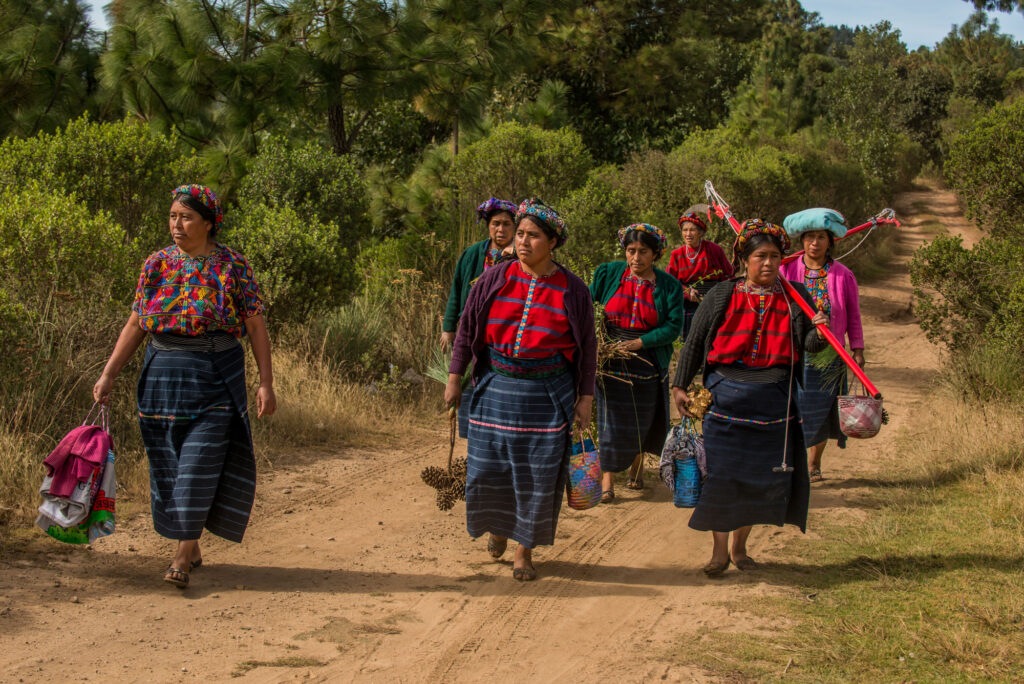
Photo courtesy of Sergio Izquierdo
MoL: How can individuals actively help to conserve rainforests in order to leave our planet in a healthy place for future generations? How do we convince people that the rainforests and our day-to-day lives are interconnected?
DK: Forests are critical to all living things on Earth. The air we breathe, the water we drink, and much of the food we eat all get a critical boost from trees. We can even find forest products all around us in our day-to-day lives—from paper products to your favorite foods (think: avocados and chocolate!). Perhaps most importantly, tropical forests’ ability to absorb carbon dioxide and stabilize Earth’s climate makes these powerful ecosystems one of our best natural defenses against climate change.
Acting on the climate crisis may feel overwhelming and even paralyzing at times, but we can start by changing what’s in our immediate control, like our food and transportation choices. We can also demand greater responsibility from those in power. Do your research and vote for candidates and legislation that prioritizes climate action. As consumers we should also vote with our wallets and look for companies that prioritize sustainability from design to disposal.
MoL: How can our readers involve themselves with the Rainforest Alliance? In what ways can they be of service?
DK: Take the Rainforest Alliance’s 30-Day Sustainability Challenge for tips and ideas on how to live a more sustainable life. We can have a huge impact on our planet through more mindful consumption. One way to shop and eat more responsibly is by looking for our green frog seal on everyday products like coffee, tea, chocolate, and bananas. By choosing Rainforest Alliance Certified, you’re contributing to a better future for nature and for the farmers and forest communities who protect our lands and forests.
Photography courtesy of Rainforest Alliance. Banner Photo, Juan-Felipe-Rubio

Founder Treana Peake, supports artisan partnerships and funds development work through the Obakki Foundation.
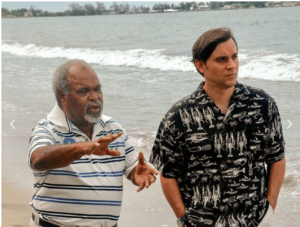
Executive Director Kevin Conrad is credited for his many initiatives through Coalition for Rainforest Nations that help unite and sustain rainforests around the world.
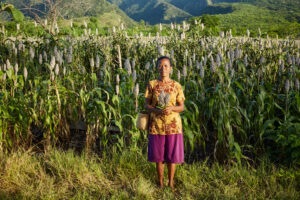
Global Greengrants Fund is a charitable foundation that supports grassroot causes to solve environmental harm and social injustice across the globe.